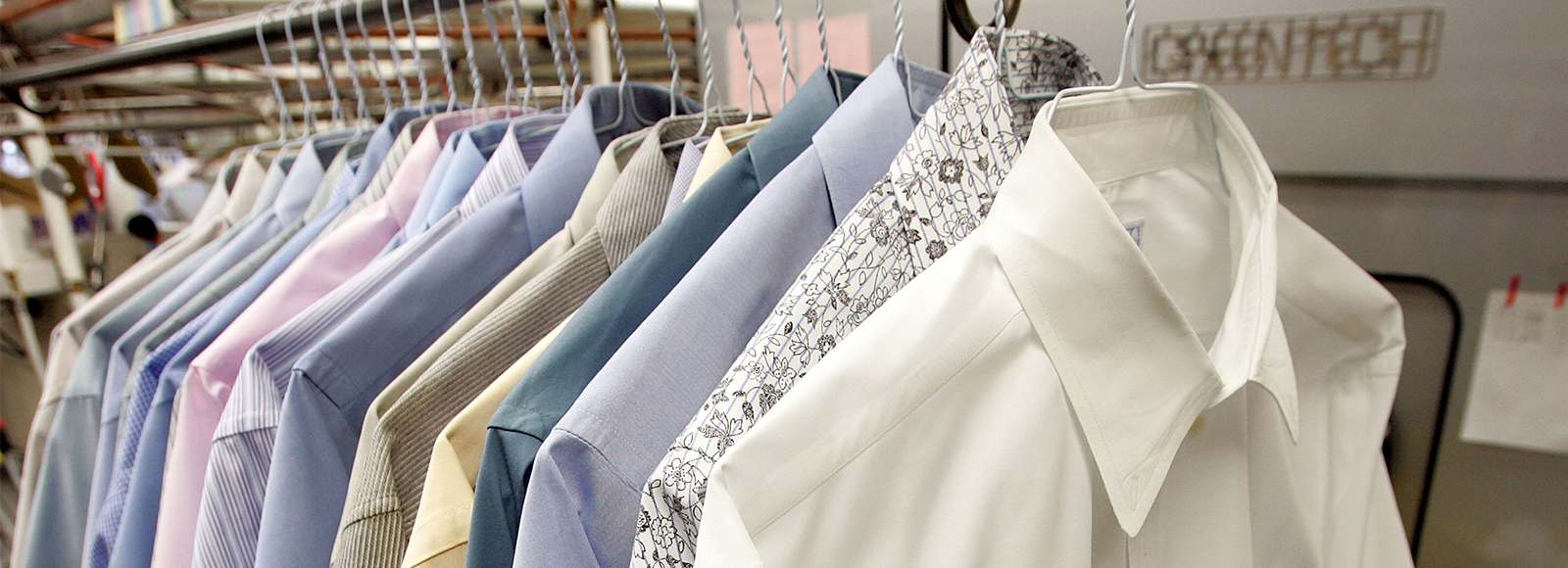
What Is Dry Cleaning
It’s a question that you’ve likely asked yourself on numerous occasions, but haven’t gone out of your way to answer… until now. We’re here to set the record straight and make the dry cleaning process a little less mysterious.
Introduction
In the simplest of terms, dry cleaning is a process of cleaning clothes without the use of water. The absence of water in the process is where the name dry cleaning comes from (one mystery solved). Instead, dry cleaning uses non-water-based chemical solvents to clean clothes.
In more complex terms, the dry cleaning process has quite a few steps to it: Inspection and Tagging, Pre-Spotting, the Dry Cleaning Process, Post Spotting, and Finishing Touches.
The 5 Steps of the Dry Cleaning Process
Inspection and Tagging
This is one of the parts that you’re likely most familiar with. You take your garment to the cleaner’s, and the dry cleaner creates a tag for your item. This is also when your clothes are examined for any stains, missing buttons, tears, etc.
Pre-spotting
Here is where things begin to get a little hazier for the average dry-cleaning customer. Once we’ve dropped off our garments, cleaners will typically go through a pre-spotting process where they’ll apply a chemical solvent (perchloroethylene), vacuum, or heat to stains on your garment, which helps to remove stains during the actual dry cleaning process.
Dry Cleaning
This is the part we never see. Once your clothes have been pre-spotted, your clothes are placed into a machine and submerged into a non-water-based solvent. The clothes are then rotated in a perforated cylinder where the cleaning solvent is released in a steady amount throughout the entire process. From there, the machine rapidly spins the clothes to get rid of any excess solvent and releases warm air. Your clothes emerge completely dry.
Post-spotting
Here your cleaner will inspect your clothes for any remaining stains and residue and remove them using the same process they did in the pre-spotting stage.
Finishing
Once your clothes have gone through the complete dry cleaning process, they are pressed, steamed, or ironed for presentation. This is the part we love because it makes our clothes look and feel amazing.

When To Dry Clean Your Clothes
There are times and fabrics when dry cleaning is not truly needed and others when it is the only option. Below is a list of occasions for each.
Do dry clean: delicate fabrics (such as silk, suede, leather, wool, cashmere), stains you do not know how to remove, garments that are tough to iron, expensive clothing that you do not want to risk in the washing machine or dryer.
Do not dry clean: fabrics such as cotton, denim, and synthetics. Always consult clothing care labels when unsure about the fabric.
Getting the Best Results from Your Dry Cleaner
Make sure you’re getting the best bang for your buck when it comes to dry cleaning. Here are a few tips to achieve that:
- 1 – Check your garment labels (we cannot stress this one enough!)
- 2 – Don’t clean your “dry clean only” garments with your at-home detergents – home dry cleaning is just not the same
- 3 – Tell your dry cleaner about any stains so they can be targeted effectively
- 4 – Clothes coming back from the dry cleaner should not smell of solvent (tetrachloroethylene or perchloroethylene). If they do, it might be time to find a different dry cleaner
Try Dry Cleaning for Delicates
Dry Cleaning can be beneficial for garments made from fibers that don’t react well when exposed to water, like silk and wool. It’s also good for garments that shouldn’t be exposed to the heat of a traditional dryer.
While the dry cleaning process is inherently opaque to the average customer since everything happens “behind the scenes,” all in all, it’s pretty straightforward once you understand the steps.
You can also try a dry cleaning services that includes pickup and delivery, such as Laundry Ghar. We provide quality solutions, while also being environmentally conscious.
Contact us at Laundry Ghar today to see our skill in action.
Have laundry or dry cleaning to do?
Laundry Ghar picks up, cleans and delivers 6 days a week. Amazingly awesome. Ridiculously simple.
Frequently Asked Questions
Can leather be dry cleaned?
Most high-quality, finished leather clothing, bags, shoes, and jackets can safely be dry cleaned. Dry cleaning lifts dirt and stains without moisture that could warp leather or bleed dyes. Always check manufacturer instructions and test cleaners first.
How do professionals clean leather?
Leather cleaning professionals assess the hide quality first, then select a custom cleaner that works for that leather grade and finish. This often includes solvents mixed with conditioners. Experts evenly apply the solution and then lift the residue using specialized blotting and drying techniques based on leather type.
Can dry cleaners clean leather purses?
Yes, most reputable dry cleaners routinely handle leather purses using industry-approved methods. They test gentle, cleaning solvents to determine compatibility with each handbag. Then, they use repeated blotting and air drying to clean the purse inside and out. This removes soils without over wetting.
Can a leather jacket be cleaned at dry cleaners?
Dry cleaning is an optimal service for cleaning finished leather jackets. Professional cleaners evaluate the precise grade of hide and tailor solvents accordingly. They carefully blot away engrained residue without soaking through the lining. Quality dry cleaning restores warmth and color to well-loved jackets.

